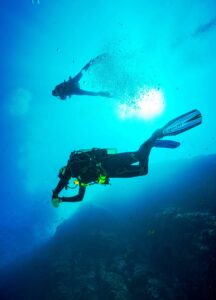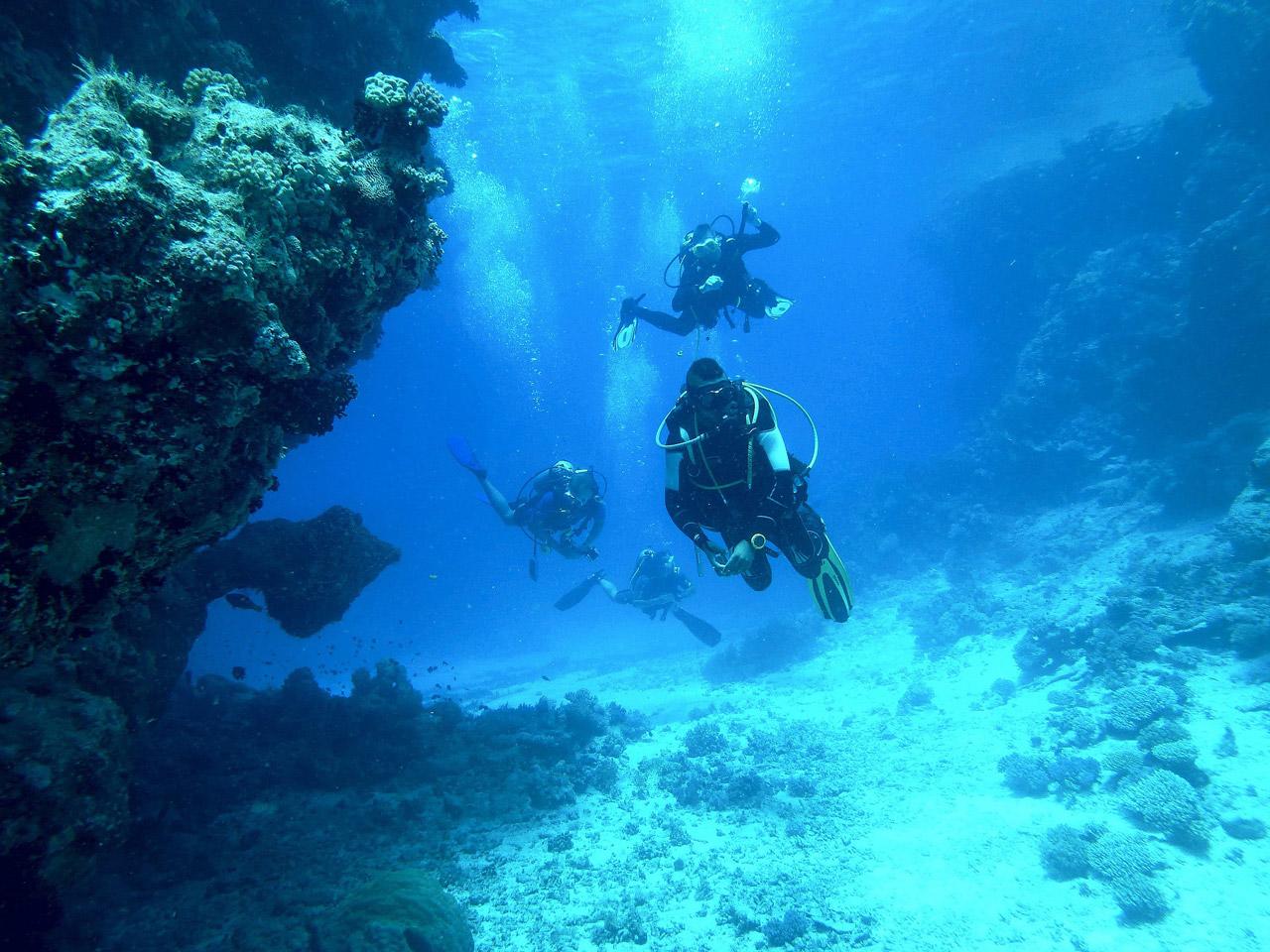
Divers’ Pearls
Under the sea all around Hvar the waters teem with fascinating finds and beauty, which only divers can enjoy. Hvar is truly a jewel for divers. There are good diving locations on the Kabal Peninsula, the Pelegrin Headland and around the Pakleni Islands, also, closer to Jelsa, around the islets of Šćedro and Zečevo and in the Zala and Tatinja Bays, and the Smočiguzica Headland.
You must observe the laws and restrictions protecting underwater plants and creatures, and the archaeological sites. You are best advised to go diving under the aegis of one of the diving centres on Hvar or in Bol on Brač.
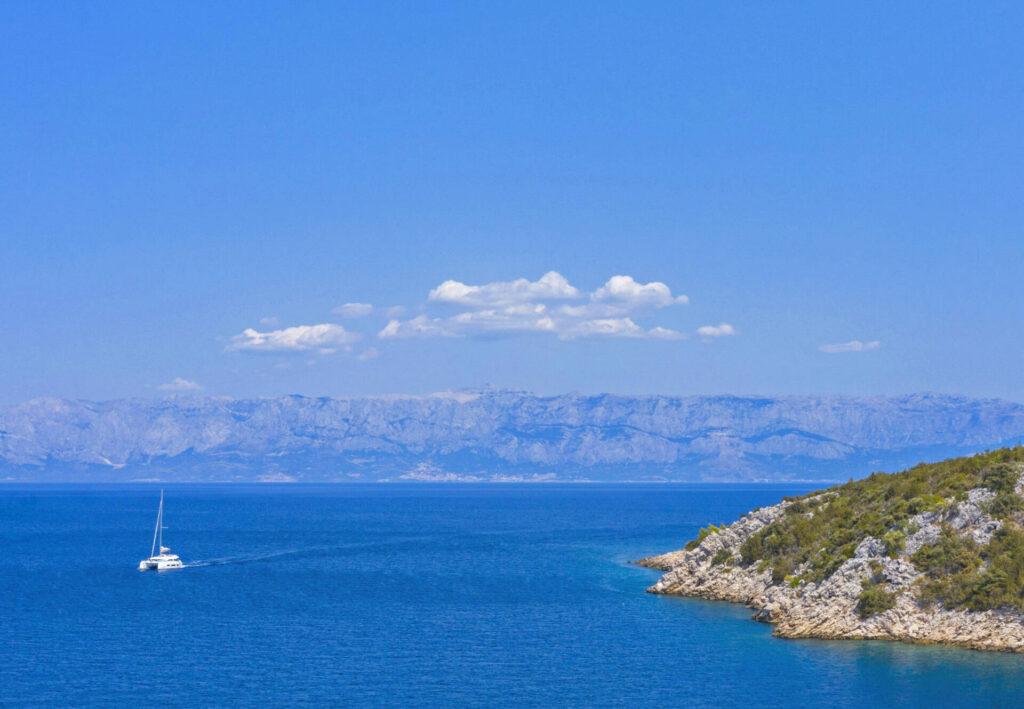
Šćedro
In the Mrtinovnik Bay on the north side of Šćedro, lying on the south side of Hvar Island four kilometres west of Sućuraj, there are remnants of wrecks sunk in a sea battle from around 47 BCE between two Roman forces, the outcome of which ensured peace on the Adriatic for the next several centuries.
On the south side of Šćedro you can see the wings of an airplane downed during World War II. The plane’s fuselage is buried a little more deeply in the sea.
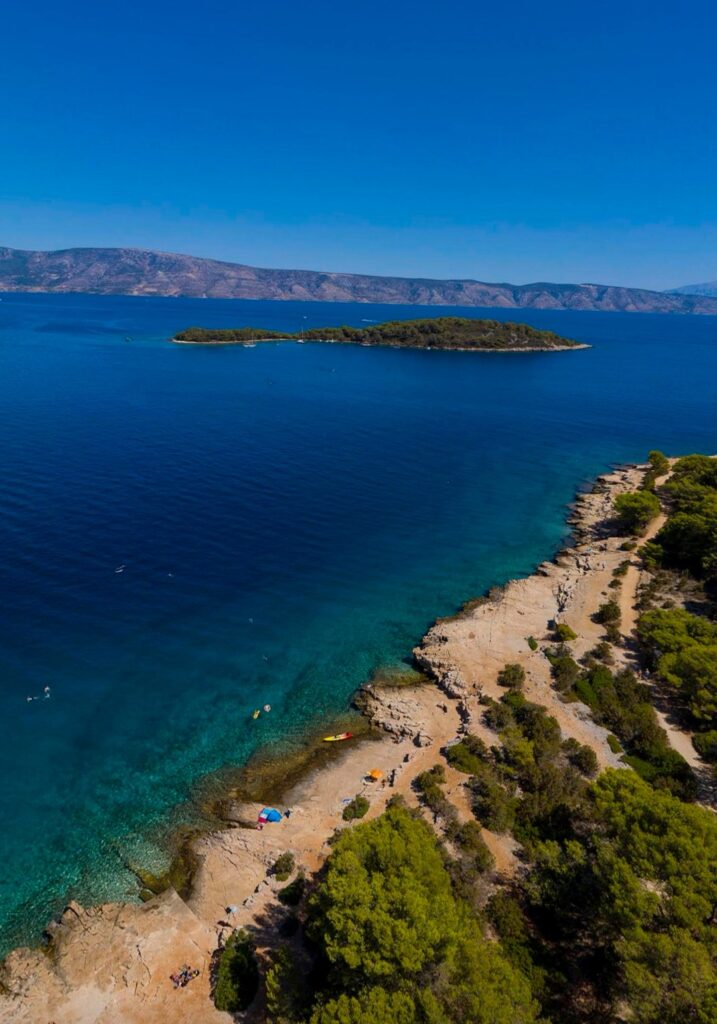
Zečevo
On the east side of Zečevo, there is a reef which starts at a depth of 18 metres and falls steeply to the south down to 45 metres. The location teems with fishes: there you will see a type of sea bream with distinctive golden stripes variously called goldline, dreamfish salema, salema porgy or cow bream in English (salpa in Croatian; Latin name, sarpa salpa) common two-banded sea bream (fratar in Croatian, Latin name, diplodus vulgaris); with luck you might also see large eels called muraenae (murina in Croatian, Latin name, muraena), or the dusky grouper (also known as the yellowbelly rock cod or yellowbelly grouper in English, kirnja in Croatian, Latin name, epinephelus marginatus).
This location is NOT recommended for novice divers.
Zala Harbour Bay
West of Vrboska is a little bay called Zala Luka (Zala Harbour), which features an interesting wall on its western cape. The wall stretches from the shore northwards, directly towards Brač Island, starting at a depth of three to four metres, with a gentle descent to 20 m, followed by a sudden drop to 50 m, a delight for experienced divers. Fish abound in this lhe location, and with luck you may see common dentex (Croatian zubatac, Latin, dentext dentex), angler fish (Croatian, grdobina, Latin Lophius piscatorius), conger eels (Croatian, ugor, Latin, conger conger), and red scorpionfish (also bigscale scorpionfish, large-scaled scorpion fish in English; Croatian, škarpina, Latin scorpaena scrofa).
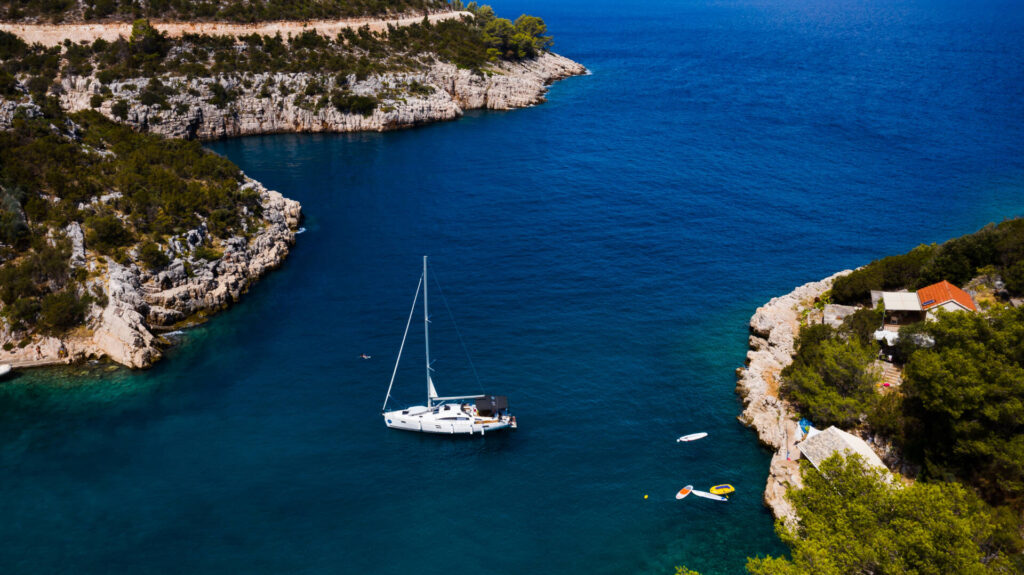
Tatinja Bay
Along from Zala Harbour Bay is Tatinja Bay. On its eastern cape twenty metres from the shore is the wreck of a ship, which probably dates from the 19th century. At a depth of 30 metres one can still see relics from its cargo, although the location has been ravaged and pillaged over time. Divers will be interested in the wall which is twenty metres high and stretches out northwards parallel to the shore, starting from the site of the wreck.
Smočiguzica Headland
This headland is halfway between Jelsa and Stari Grad, and its photograph has beenmade famous on tourist posters around the world. In that location reefs abound like mushrooms. The sea floor descends to 17 – 18 metres, at which point a rock rises up measuring ten metres in height with a diameter of about 30 metres. It stands at the edge of steps after which the ground falls away vertically to 40-55 metres, finishing in sand with a few isolated stones here and there. The wall overflows with gorgonias and cavities with big fish peeping out of them. The most striking sight of all is the view into the fathomless depths from the top of the reef.
The upper part of the reef down to a depth of 20 metres is ideal for novice divers, whereas the lower area is only for experienced divers to delight in.
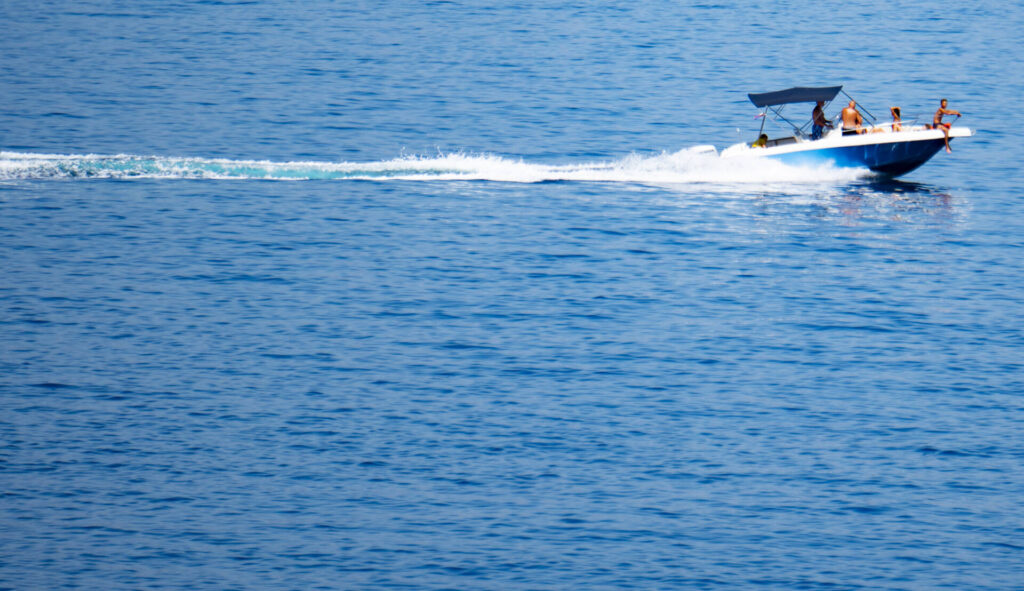
Contact information
Diving Center Black Pearl
Hotel Jadran
21465 Jelsa
The island of Hvar
Croatia
Jurica mob. +385 (0) 98 912 6463
email: black.pearl.jelsa@gmail.com




